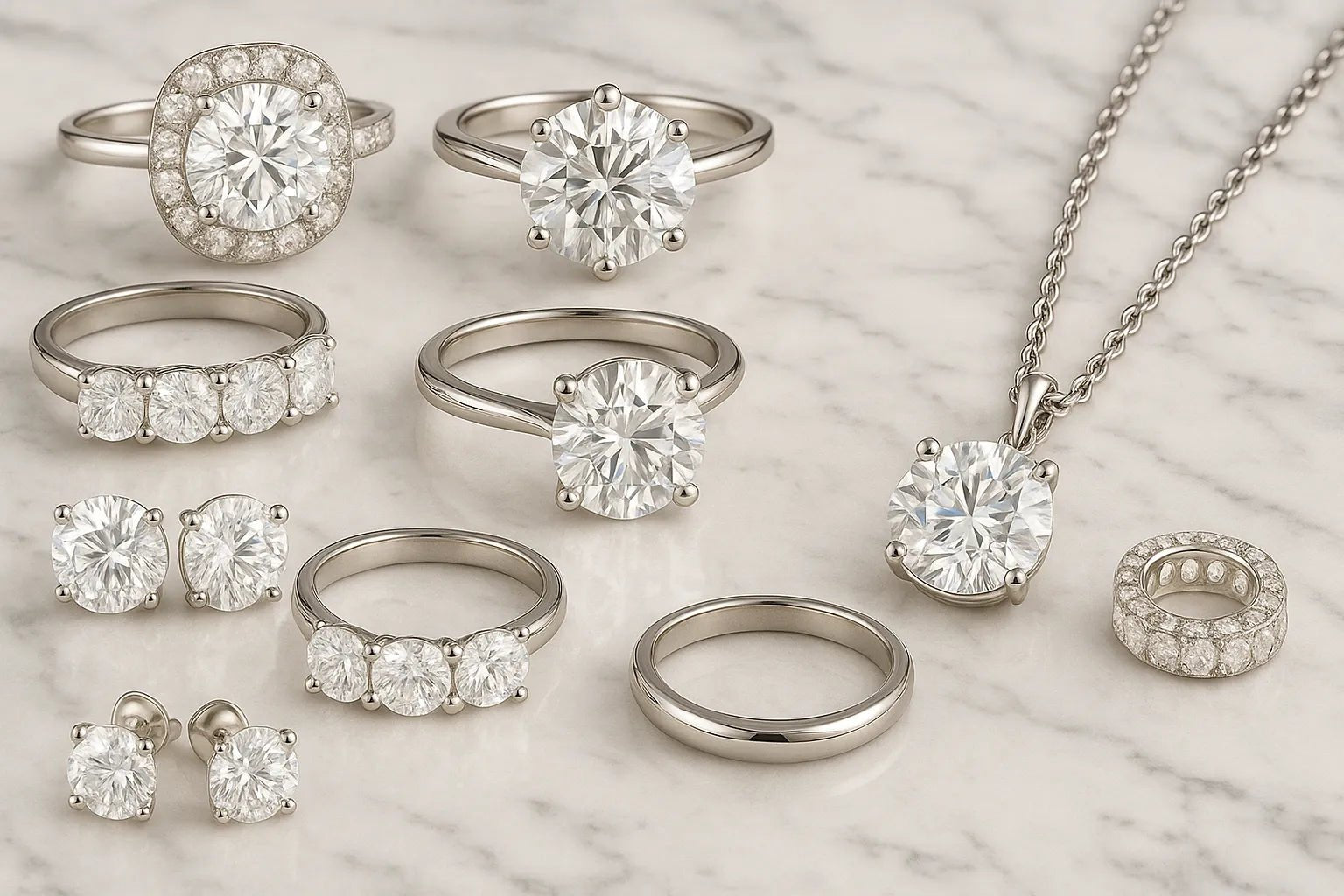Moissanite is quickly becoming one of the most beloved gemstones in modern jewelry — and for good reason. With its incredible brilliance, ethical sourcing, and affordability, moissanite offers a luxurious sparkle without the environmental cost of traditional diamonds.

The Origin of Moissanite
Moissanite was first discovered by French scientist Henri Moissan in 1893, in a meteor crater. Natural moissanite is extremely rare, so today, it is ethically created in labs — resulting in a gemstone that’s almost indistinguishable from diamonds to the naked eye.

Moissanite vs. Diamond
While both stones look incredibly similar, moissanite is known for its higher brilliance — meaning it reflects more light and has more fire than diamonds. It’s also nearly as hard as a diamond (9.25 vs 10 on the Mohs scale), making it perfect for everyday wear. The major difference? Moissanite is a fraction of the cost and far more sustainable to produce.

A Planet-Friendly Gemstone
Mining natural diamonds often leads to habitat destruction, water pollution, and carbon emissions. Moissanite, being lab-grown, avoids all that. It’s a low-impact gem that delivers stunning beauty without the ethical concerns.
How to Clean and Care for Moissanite
Moissanite is easy to maintain. Here are a few tips to keep your pieces looking their best:
- Use warm water with mild soap and a soft brush.
- Avoid harsh chemicals and ultrasonic cleaners.
- Store in a soft pouch or box to prevent scratches.
→ Explore our Moissanite Jewelry Collection
If you’re looking for a brilliant, responsible alternative to traditional diamonds, moissanite is a shining example. Ethically sourced, radiant in beauty, and built to last — it’s the future of fine jewelry.


